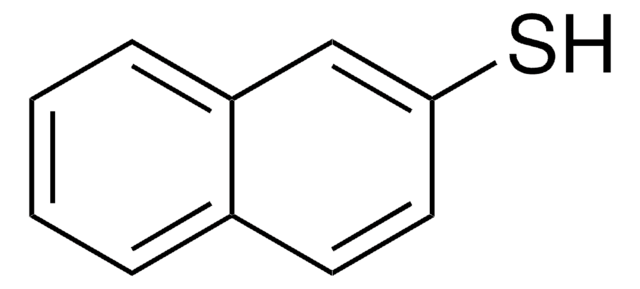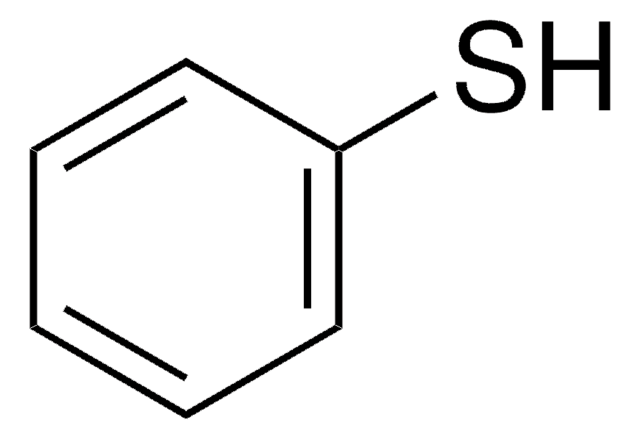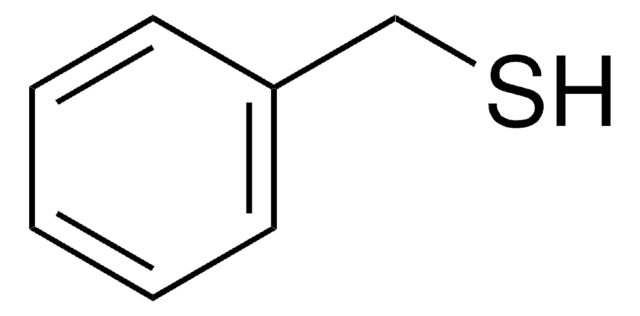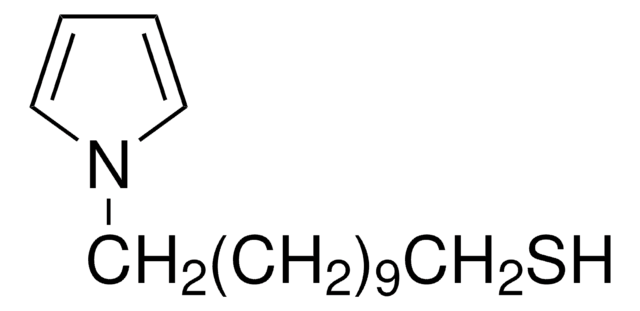추천 제품
Quality Level
분석
97%
형태
solid
mp
108-112 °C
저장 온도
2-8°C
SMILES string
Sc1ccc(cc1)-c2ccccc2
InChI
1S/C12H10S/c13-12-8-6-11(7-9-12)10-4-2-1-3-5-10/h1-9,13H
InChI key
KRVHFFQFZQSNLB-UHFFFAOYSA-N
일반 설명
Biphenyl-4-thiol(BPT) is an alkylthiol that forms a self-assembled monolayer(SAM) which can be used as a spacer chain that enhances the adhesion and frictional forces on a variety of surfaces.
애플리케이션
BPT may also be used as a resist in electron lithography to form lubricants for microelectromechanical systems(MEMS). BPT may be used to surface modify gold(Au) which can be potentially used in the formation of freestanding nanosheets.
This material is used to create close-packed monolayers in large-area molecular junctions.† It also finds use as a negative resist material for nanolithography.†
신호어
Warning
유해 및 위험 성명서
Hazard Classifications
Acute Tox. 4 Oral - Aquatic Acute 1 - Aquatic Chronic 1
Storage Class Code
11 - Combustible Solids
WGK
WGK 3
Flash Point (°F)
Not applicable
Flash Point (°C)
Not applicable
가장 최신 버전 중 하나를 선택하세요:
이미 열람한 고객
Hyunook Kang et al.
Talanta, 168, 240-245 (2017-04-11)
We report a method of small molecule analysis using a converted graphene-like monolayer (CGM) plate and laser desorption/ionization time-of-flight mass spectrometry (LDI-TOF MS) without organic matrices. The CGM plate was prepared from self-assembled monolayers of biphenyl-4-thiol on gold using electron
Kronemeijer; A. J.; Huisman; E. H.; Akkerman; H. B.; et al
Applied Physics Letters, 97, 173302/1-173302/3 (2010)
Orientation and relocation of biphenyl thiol self-assembled monolayers under sliding.
Liu H and Bhushan B
Ultramicroscopy, 91(1-4), 177-183 (2002)
Giovanni Luca Bartolomeo et al.
Applied spectroscopy, 74(11), 1358-1364 (2020-03-14)
Tip-enhanced Raman spectroscopy (TERS) is a powerful tool for the characterization of surfaces and two-dimensional materials, delivering both topographical and chemical information with nanometer-scale spatial resolution. Atomic force microscopy (AFM)-TERS combines AFM with a Raman spectrometer and is a very
Joong Bum Lee et al.
ACS nano (2020-12-04)
Deterministic positioning and assembly of colloidal nanoparticles (NPs) onto substrates is a core requirement and a promising alternative to top-down lithography to create functional nanostructures and nanodevices with intriguing optical, electrical, and catalytic features. Capillary-assisted particle assembly (CAPA) has emerged
자사의 과학자팀은 생명 과학, 재료 과학, 화학 합성, 크로마토그래피, 분석 및 기타 많은 영역을 포함한 모든 과학 분야에 경험이 있습니다..
고객지원팀으로 연락바랍니다.










